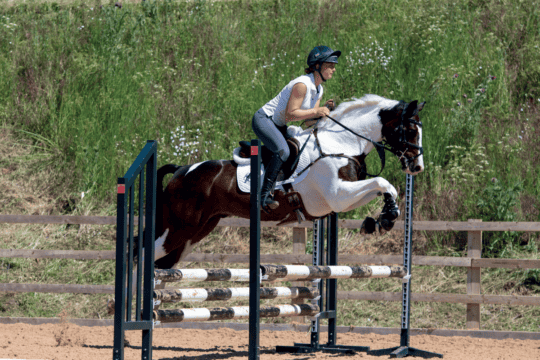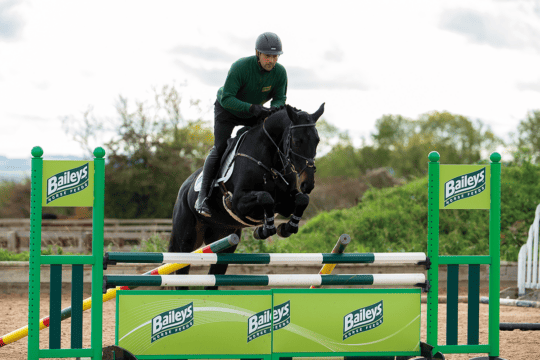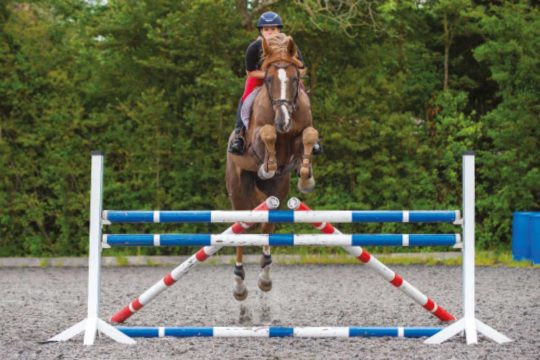-
Riding Schooling and Training
-
Health and Veterinary
-
Management
-
Mind Matters
-
Buying and Selling
-
Insurance Advice
FAQs
Planning your first cross-country schooling session of the season? Olympic eventer Tina Cook explains how to make it productive and positive
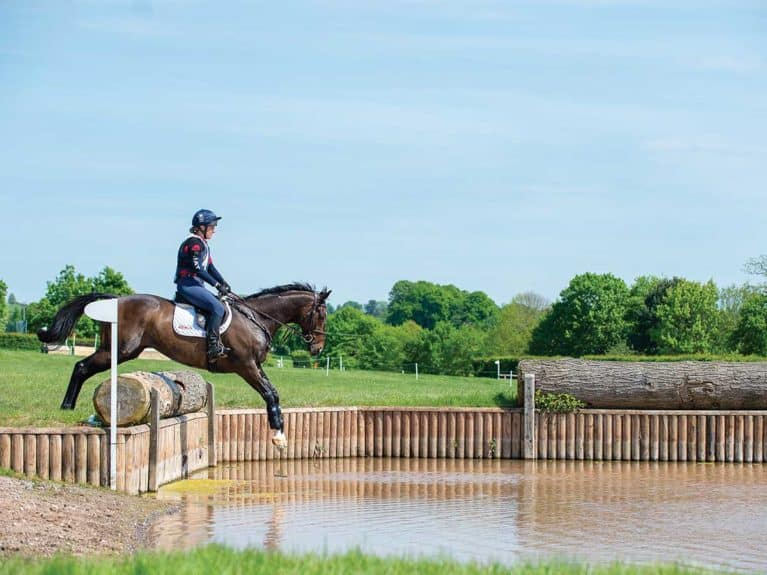
Cross-country is, at its heart, a test of your horse’s bravery. With this in mind, your main goal in training is to give him positive experiences all the time – this is key to instilling courage and acceptance. If you help him succeed at the most basic level by introducing fences in a constructive way, then gradually increase the challenge, he’ll be much more willing to tackle more technical questions further down the line. There’s no point in trying to be clever or catch him out. If he’s confident, he’ll jump for you, if he’s not, then he won’t – it’s as simple as that.
Tackling steps
Steps are a challenge best broken down into small, manageable chunks that your horse will easily understand. Start by finding the smallest step you can, which may mean using the side of the first step in a staircase. Come in at a steady trot so he’s got time to see the step and think about what he needs to do, and allow him to take you up and down the step. Going slowly is better than rushing, but make sure you’ve still got enough momentum so he doesn’t grind to a halt.
Your end goal is that your horse can go up and come down the step with confidence, in trot and canter. Once he’s able to do that, you can try a taller step or have a go at tackling a staircase. Make sure to only increase the challenge gradually so you don’t run the risk of scaring him because he’s overfaced.
Top tip
Slip your reins through your fingers as your horse jumps to avoid catching him in the mouth. This is better than giving with your hands, as it allows your body to stay behind the movement.
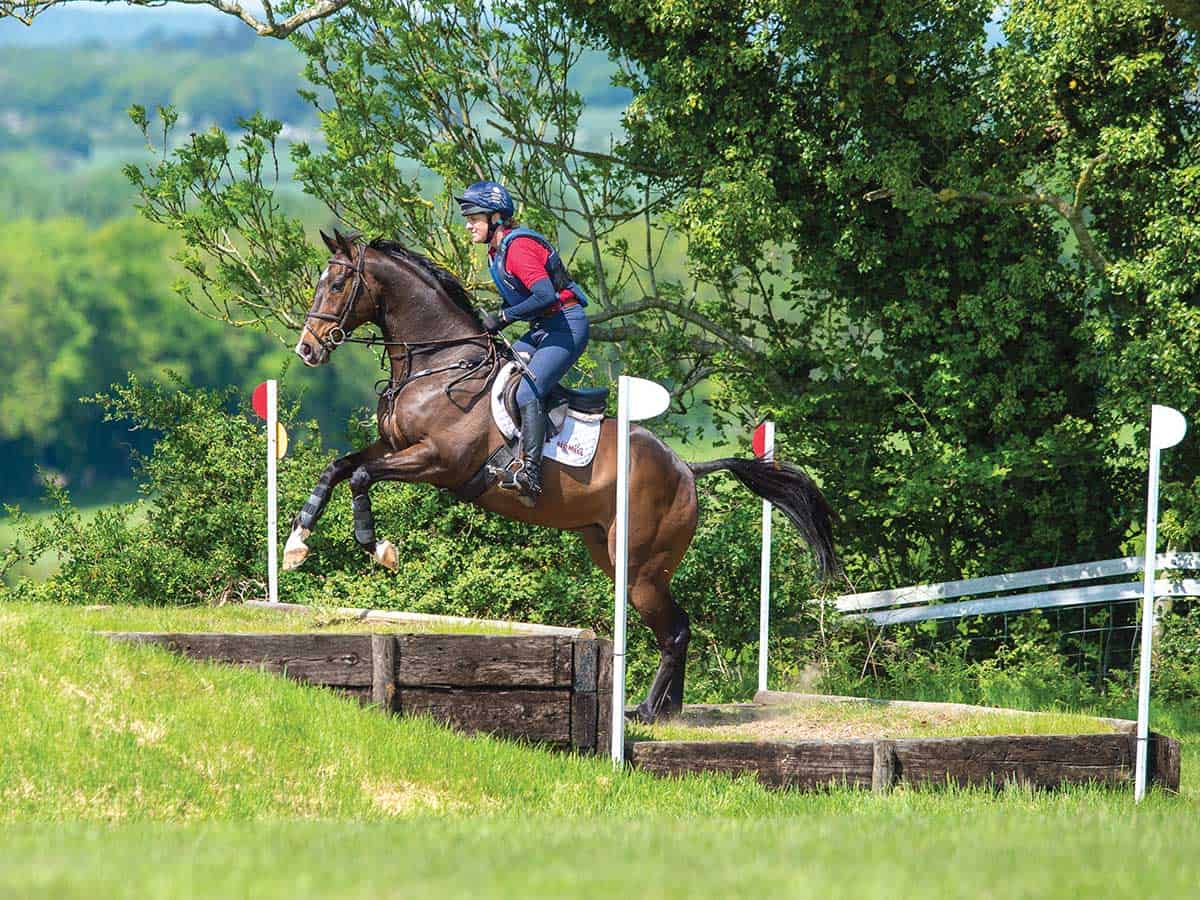
Ditches
You can introduce ditches in a very similar way to steps. The key is to start small and use a lead if you’re worried about how your horse will react. Because they don’t have any height, you don’t need a lot of power to get over a ditch, particularly when they’re small, so maintain a steady trot. Even a jog is fine if your horse is prone to rushing, as he needs plenty of time to realise the ditch is there. Avoid letting your body creep forwards on the approach – if he grinds to a halt and you’re already halfway up his neck, the odds are that you’ll be unseated.
If the ditch you’re working with is part of a combination, trot past the other element first, making it clear you’re not intending for him to jump it, then tackle the ditch. If you jump the ditch and he charges past the other element on landing, this teaches him that there’s the option to run out when you come to stringing the fences together.
Top tip
If your horse lands and picks up canter, he needs to learn to come back to trot after you’ve travelled away from the fence. This teaches him to be soft and wait for your next instruction, rather than towing you forwards or back to his friends.
Pick up the pace
If you’ve jumped a few times from trot and your horse wants to slip into a controlled canter, that’s fine – it shows he understands what he needs to do and is feeling brave. It’s better that he comes in slowly and speeds up by choice, rather than approaching fast and then slamming on the brakes because he wants to have a look at the fence.
Taking a lead
If your horse hasn’t tackled a certain type of fence before, a lead from an experienced horse will offer reassurance and help him understand what to do. Once you’ve done this a few times and he’s feeling confident, peel off and have a go by yourself. It’s easy to spend your whole schooling session following another horse, but at an event you’ll have to tackle everything on your own. Go and jump a few fences, then let your horse stand and watch the other horses for a bit, then go and jump a few more.
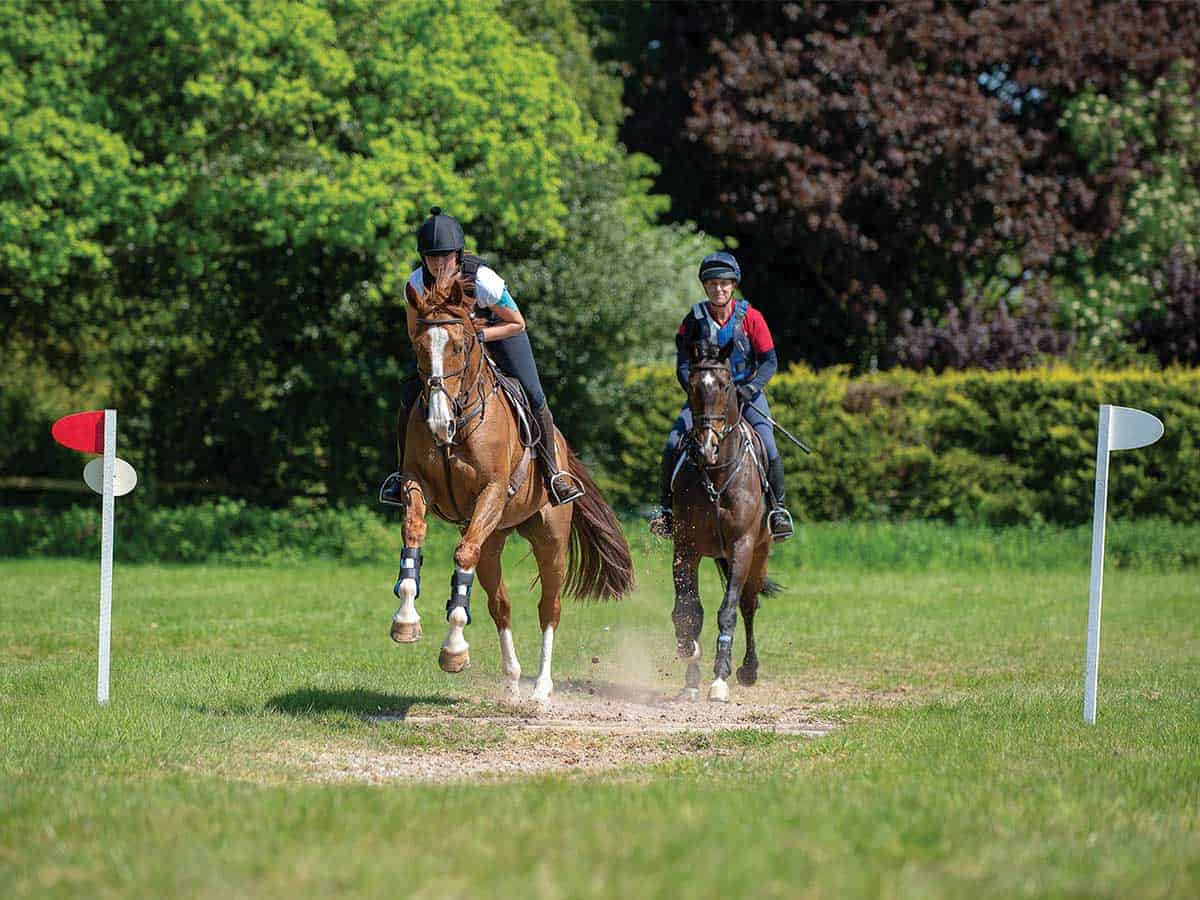
Water jumps
Start by encouraging your horse to travel through the water in walk and trot. How you do this depends on how much he’s done previously – if he’s green and naturally suspicious, a lead can give him the confidence to take the plunge. If he’s bold and has seen water before, maybe out hacking, then try going solo. Whichever you choose, walk him forward with purpose, ready to give him a nudge with your heels if he hesitates.
As he gets closer, let him look down so he can see what’s coming – you don’t want the water to be a surprise. Make sure your hands are down and your lower leg is forward. Give him a pat as he walks into the water, but keep him going until all four feet are in. If he wants to sniff the water and splash about to help him understand there’s no reason to worry, that’s fine – training should be fun, after all. Once he’s happy to walk in and trot out, then build up to trotting in and cantering out.
Top tip
Start your horse’s water training by taking advantage of large puddles when you’re hacking. Make sure you’ve checked the footing, though, as an unexpected pothole or sharp stone could give him a nasty surprise.
Jumping in to water
When you come to jumping into water, choose a simple step down to start with before tackling meatier fences. Approach in trot and ensure your horse is moving forward – make it clear that he needs to go, but don’t hassle him. Be ready to use a stronger leg aid if needed, but otherwise it’s down to him to jump the fence once you’ve set him up. Keep your upper body tall and your shoulders back so you’re stable if he tries to duck out or takes a flyer.
When he lands in the water, put your leg on – particularly if he’s suspicious – so he keeps moving forwards. However, vary what you do so he doesn’t always charge straight out the other side – this keeps him on his toes and waiting for your next direction. For example, you could try turning him in a circle.
Top tip
When tackling a combination that includes a water element, canter over the fences that come before, then sit back and ask your horse to ‘whoa’ so he trots into the water.
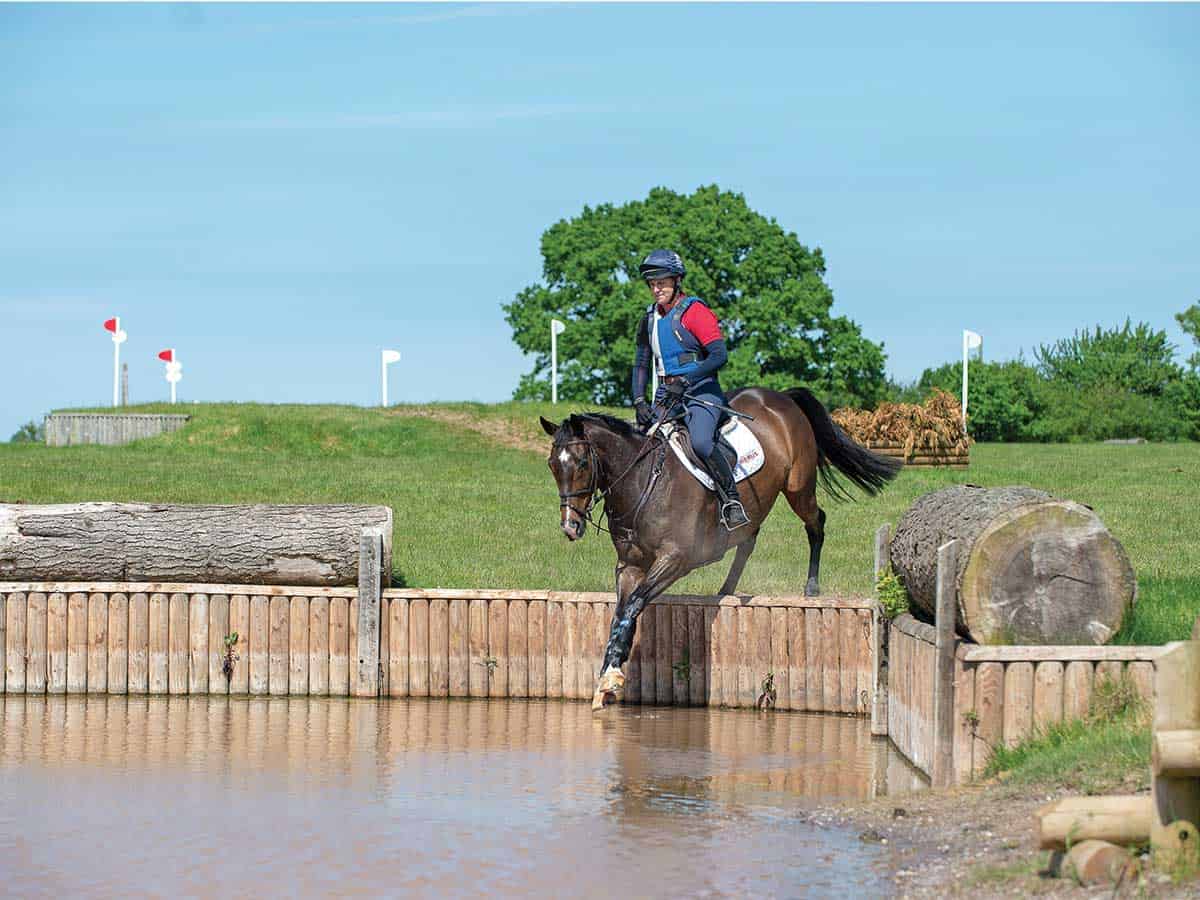
Working on your canter
Once your horse is familiar with ditches, steps and water, you want to approach them in a condensed, bouncy canter – sometimes known as a coffin canter. An important part of cross-country schooling is teaching your horse to come back to you and shorten into this type of canter as soon as you ask. This gives him time to see what he’s doing and understand the fence – you can always move away from the fence quickly, but don’t use speed on the approach.
Being able to change your body position quickly and smoothly is something to practise on the flat or out hacking. Try switching from a forward, travelling seat to sitting back and collecting. Initially you may have to sit quite deeply in the saddle to achieve this, but as your horse learns what you’re asking, simply shifting your shoulders back should be enough for him to collect.
Using your weight rather than your reins causes less interruption to your rhythm, which is key for making the time at competitions and also for giving your horse a smooth ride. Once he’s come back and is soft, you can shift up into your forward seat and go again.
Top tip
If you don’t get a reaction from sitting back, then use your reins. Always put your weight back first, though, before going to your hand.
Narrow fences
Because skinny and arrowhead fences are such a test of accuracy, you need to establish a controlled canter so you can make sure your horse takes off from the right place. If you’re galloping into the fence on a long stride, then you’re very limited about what point you can take off from. A more condensed canter, on the other hand, will give you more options. Maintain a steady pace, keep your shoulders back and ride into the base of the fence, which will give you a better chance of getting between the flags as opposed to standing off from it and hoping for the best.
If you have the opportunity to practise a narrow fence at home, putting V-poles up will help your horse understand what to do. It can also be beneficial to put flags on your fences to help guide him over. If you don’t have flags, using tall, straight wings is another option.
Top tip
There’s no point in using speed to get over an accuracy question, because once your horse learns that the option is there to run out, he’ll take it.
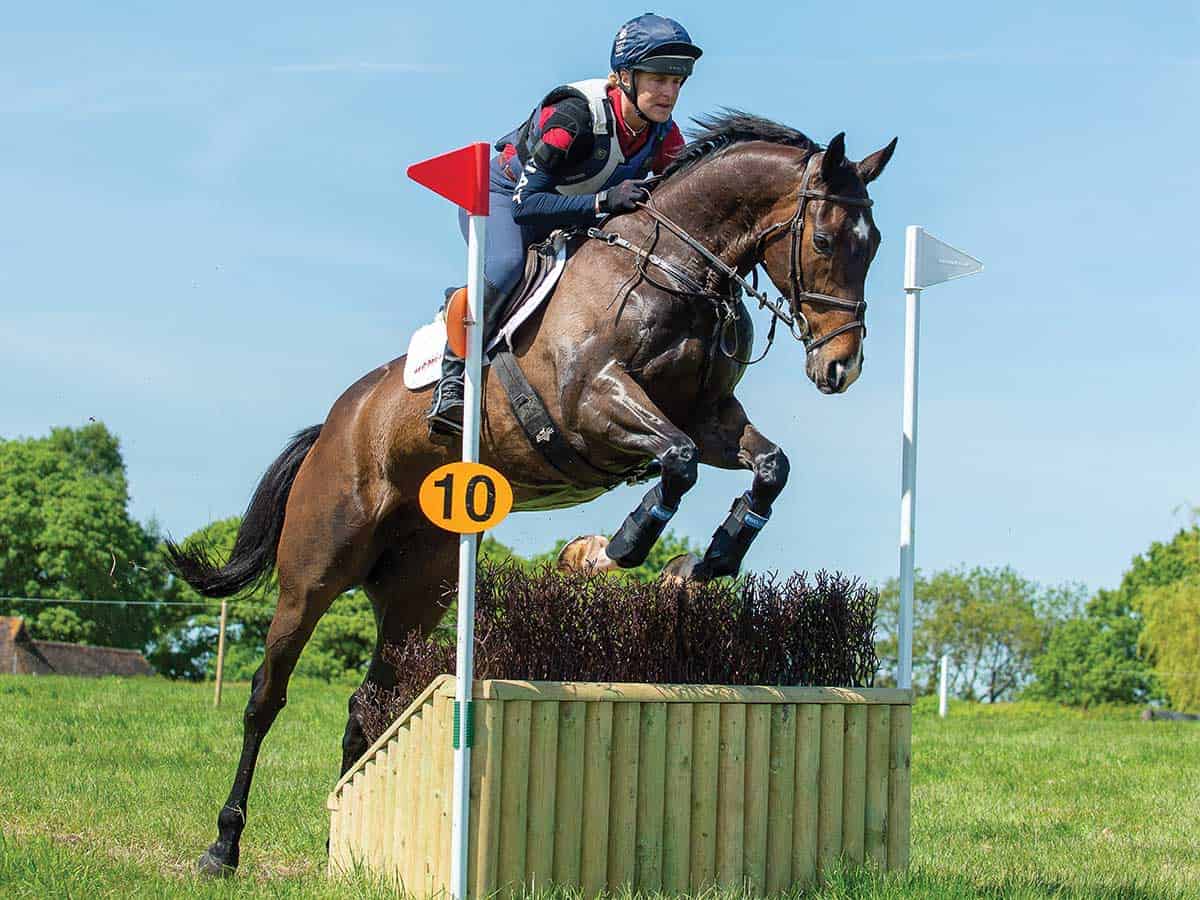
Dealing with stops
If your horse stops at a fence, it’s important to consider why it’s happened. If he’s happily jumped this type of fence before and you’ve done everything you can to prepare him for it, a tap with your whip on his shoulder will tell him that stopping isn’t acceptable. You can then bring him round to the fence again.
However, if he’s stopped because he doesn’t understand the question, he’s genuinely worried or you haven’t set him up properly, then telling him off isn’t the solution. Instead, calmly bring him round again, but consider taking a lead from another horse and make sure you’re doing your level best to help him. Giving him the benefit of the doubt can be far more educational and positive than using your whip, which will only upset him further.
It’s not a case of being so soft that you never reprimand your horse, but it mustn’t be your automatic reaction if something goes wrong. He should never be jumping to run away from your whip – he should be jumping because he wants to. This comes from building up his confidence and framing your training in a positive way, not indiscriminately telling him off.
Top tip
Always end your sessions on a positive note, even if this means going back to basics and jumping a few simple fences your horse already knows how to do.
The great outdoors
There are ways to work on your cross-country training between schooling sessions. When you’re hacking, take advantage of the surroundings to broaden your horse’s skill set. Find undulations that you can tackle in walk, trot and canter, and look out for suitable, safe ditches and water sources. Use every opportunity to increase your horse’s knowledge and experience – this teaches him to go and jump when you ask, even if it’s something a bit surprising. You want his natural reaction to be ‘okay, I can do that’, regardless of the challenge or unusual fence dressing you meet.
Building confidence
Successful training is all about getting your technique and discipline, and your horse’s confidence, in place before you make things complicated. Cross-country riding is a partnership – you need to trust your horse and he needs to be able trust you in return. Most importantly, though, you both need to enjoy it.
With thanks to Connolly’s Red Mills for their help with this feature, redmills.co.uk




